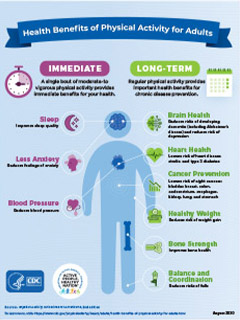
Walking, stationary cycling and swimming are all examples of cardio/endurance exercises. Physicians recommend 30 minutes of cardiorespiratory endurance exercise each day for seniors in order to elevate heart rate and speed up breathing. For these reasons, the ideal senior exercise regimen consists of the following three components, which can be adapted for anyone’s unique stamina and abilities. But while age-related changes in the cardiovascular system have significant effects on performance, it has been estimated that half of this reduction in endurance can be related to decreased muscle mass. Limited endurance is often the reason why seniors are unable to tolerate aerobic exercise routines on a regular basis. However, this does not mean that older individuals are unable to partake in physical activities. Trendy, rigorous exercise regimens that younger generations participate in simply are not safe or realistic for many seniors. In addition, a study by the Journal of the American Geriatrics Society found that seniors who exercised experienced improvements in functional reach and balance and reduced the participants’ fears of falling. For example, exercise is vital for helping individuals with conditions like dementia and Parkinson’s disease to maintain their balance and coordination and extend their functional independence.Ī consistent exercise schedule is also associated with decreased mortality and age-related morbidity in older adults. Protection Against Chronic Conditions. Physical activity lowers the risk of developing serious conditions and can actually minimize some symptoms after certain conditions have already developed.Improved Gastrointestinal Function. Regular exercise helps boost the metabolism, promotes the efficient elimination of waste and encourages digestive health. Physical activity is an excellent “treatment” for people who suffer from slow digestion and constipation.Research done at Tufts University shows that strength training can dramatically reduce this loss, restore bones, and contribute to better balance and less fractures.

While men do lose some bone mass as they age, post-menopausal women are particularly susceptible and can lose as much as 2 percent bone mass each year. Higher bone density reduces the risk of osteoporosis and lowers the risk of falls and broken bones. Strong Bones. Exercise protects against bone loss.

Strong lungs and airways and a healthy heart and vascular system allow the body to function properly and more efficiently clear out and destroy any invaders that can make us sick.


 0 kommentar(er)
0 kommentar(er)
